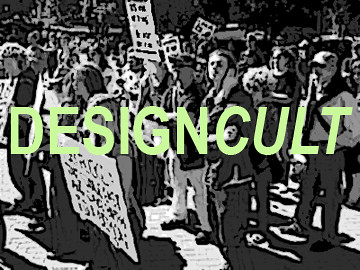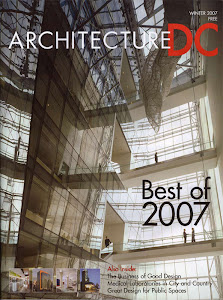 So I was amused to come across this sight several weeks ago on my way to the metro: A Christmas tree sitting upright in a trashcan beside a Metrobus stop. Presumably this was simply someone's effort to discard of their left-over holiday conifer, but it gave me pause, as for a moment it appeared to be a planted shrub. This led me to thinking about the lack of green in this particular transit plaza, and furthermore to imagine the incorporation of plantings in concert with common urban elements, such as the humble bus stops.
So I was amused to come across this sight several weeks ago on my way to the metro: A Christmas tree sitting upright in a trashcan beside a Metrobus stop. Presumably this was simply someone's effort to discard of their left-over holiday conifer, but it gave me pause, as for a moment it appeared to be a planted shrub. This led me to thinking about the lack of green in this particular transit plaza, and furthermore to imagine the incorporation of plantings in concert with common urban elements, such as the humble bus stops.
Admittedly, the design of the DC Metrobus shelter has gotten more attractive over the last few years. The one pictured here is one of the few remaining of this kind that I've come across, many having been replaced by new glass and aluminum shelters, which feel much more open and less oppressive. But what if, beyond being more aesthetically pleasing, our bus shelters could be better for the environment as well. Imagine if these shelters incorporated planters which would collect rainwater from their roofs to water the plants and help reduce stormwater, which would otherwise end up on sidewalks and carrying debris into our sewer system. How about a sedum-sprouting greenroof? How wonderful if our bus stops could become a living oasis in our cities.
Some jurisdictions, including San Francisco and Chicago, are exploring sustainable solutions, such as solar powered bus shelters. Others are utilizing LED streetlamps (a topic which I'll explore further in a future post). The point, really, is for us to begin to reinvent common urban elements in such as way that they contribute to not only the built environment but to the natural environment as well. Imagine solar-powered streetlamps illuminating permeable sidewalks. Trash and recycling receptacles made themselves from recycled materials. Bike racks that integrate seating to encourage multiple forms of street life. Once we start thinking beyond the singular use of the ordinary objects that surround us, we'll realize countless ways in which these objects can become both more dynamic and more eco-friendly.
Wednesday, February 17, 2010
Urban Seen :: Pondering a Greener Bus Stop
Subscribe to:
Post Comments (Atom)









I completely agree. Why don't we make them greener? I'm glad there are people out there who care about these things. As a response to the LED street lights, I am sad to see that LED is the new wave because. Induction lamps are a better alternative in my opinion. I started a project to replace old halide street lamps on the University of Utah campus with induction lamps. Sadly, the project was halted because they want dark-sky certification on the new products that just recently became commercially viable. I think things like this may be the reason many sustainable projects get pushed down because in order for a change to be made they want statistics, charts, and graphs to prove it. Despite times when the outcome of the project has obvious benefits.
ReplyDelete